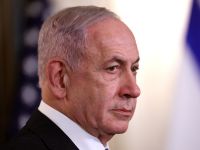Dr. Gil Feiler
Economic sanctions have become a cornerstone of American foreign policy, representing a middle ground between diplomatic protest and military intervention. The relationship between the United States and Russia has been particularly characterized by cycles of sanctions imposition and removal, reaching unprecedented levels following Russia’s actions in Crimea (2014) and subsequent military operations in Ukraine (2022). As of August 2025, the sanctions regime against Russia represents the most comprehensive economic pressure campaign in modern history, with continuing evolution and adaptation on both sides.
Recent developments in 2025 indicate that the Russian economy now appears to be experiencing the full effects of international sanctions, with the first signs appearing at the end of 2024. Simultaneously, the UK announced that the Crude Oil Price Cap on Russian oil will be reduced from $60 barrel to $47.60 on 2 September 2025, representing continued tightening of energy-related restrictions.
The central research questions guiding this analysis include: To what extent do American economic sanctions influence Russian policy decisions? How do these measures affect not only Russia but also former Commonwealth of Independent States (CIS) nations and Middle Eastern economies? What are the comparative outcomes of sanctions versus non-sanctions approaches in achieving American strategic objectives?
Historical evidence suggests a complex relationship between economic pressure and Russian policy modification. During the Cold War era, the Soviet Union demonstrated selective responsiveness to economic pressure, particularly when combined with internal economic difficulties. The Jackson-Vanik Amendment, which linked trade benefits to emigration policies, eventually contributed to increased Jewish emigration from the Soviet Union, though this success required decades and coincided with broader systemic changes.
More recently, Russia’s responses to sanctions have been characterized by adaptive resilience rather than direct compromise. Following the 2014 Crimea-related sanctions, Russia implemented import substitution policies, strengthened ties with non-Western partners, and developed alternative financial mechanisms. Rather than reversing its territorial claims, Russia demonstrated economic pivot capabilities that reduced immediate sanction effectiveness.
The post-2022 sanctions regime represents the most comprehensive economic pressure campaign in modern history. Recent analysis indicates that trade between Russia and US has fallen 90% since 2021, fundamentally altering bilateral economic relationships. However, this dramatic reduction in bilateral trade has simultaneously blunted the impact of additional proposed tariffs or sanctions, as there are fewer economic connections left to sever.
Current evidence from 2025 suggests that the Russian economy now appears to be experiencing the full effects of international sanctions, with the first signs appearing at the end of 2024. This delayed impact reflects the time required for comprehensive sanctions to permeate through complex economic systems and exhaust adaptive capacity.
Russian leadership appears more likely to compromise on issues perceived as peripheral to core national interests. However, on matters deemed fundamental to national security or territorial integrity, economic pressure alone has historically proven insufficient to compel major policy reversals. The current sanctions regime tests this traditional pattern, as economic pressure reaches unprecedented comprehensiveness and duration.
Economic Adaptation and Sanctions Circumvention
Russia has demonstrated considerable capacity for sanctions adaptation through several mechanisms. These include developing alternative payment systems (such as the System for Transfer of Financial Messages), strengthening economic ties with China, India, and other non-aligned nations, and implementing comprehensive import substitution programs in critical sectors.
The effectiveness of sanctions in compelling compromise is further complicated by Russia’s natural resource advantages. Energy exports provide significant leverage, particularly during periods of global energy price volatility. This resource wealth creates both vulnerability to market-based sanctions and potential for economic weapon deployment against sanctioning nations.
Impact Analysis: Russia and Former CIS Countries
Direct Economic Effects on Russia
Comprehensive sanctions have produced measurable economic impacts on Russia across multiple sectors, with effects becoming particularly pronounced in late 2024 and early 2025.
The financial sector has experienced significant stress through exclusion from SWIFT systems, asset freezes, and restricted access to international capital markets. These measures have increased transaction costs, limited investment flows, and complicated international trade execution.
Recent evidence indicates that the sanctions have decreased Russia’s trade with sanctioning states, though with heterogeneous effects across different European Union members. More significantly, there has been substantial trade diversification between Russia and third countries that have mitigated some sanction effects, demonstrating the complex global economic adjustments prompted by comprehensive sanctions regimes.
The technology sector faces particular challenges through export controls on semiconductors and advanced technology components. According to 2024 analysis, the primary military vulnerability of Russia lies in its ammunition manufacturing capacity. The Russian Ministry of Defence forecasts that around 4 million 152mm artillery shells and 1.6 million 122mm shells need to be manufactured or procured by 2024 to secure significant territorial gains, with current capacity imposing limitations on achieving this target due to ongoing reliance on Western components.
Energy sector sanctions represent perhaps the most significant long-term challenge for Russian economic stability. The UK’s announcement in July 2025 that the Crude Oil Price Cap on Russian oil will be reduced from $60 barrel to $47.60 beginning September 2, 2025, represents continued tightening of energy-related restrictions. This reduction, combined with existing restrictions on technology transfer for oil and gas extraction and market access limitations, threatens future production capacity. Nevertheless, alternative market development, particularly in Asia, has partially offset Western market losses.
Spillover Effects in Former CIS Nations
Former Soviet republics experience sanctions impact through multiple transmission mechanisms, with effects becoming more pronounced as sanctions mature and deepen.
Trade relationships with Russia expose these economies to secondary effects, while their own relationships with Western nations create complex political and economic pressures.
Recent developments indicate strengthened cooperation frameworks between Russia and CIS countries in response to sanctions pressure. In August 2025, Russia agreed upon oil and gas standards with countries of the Middle East, CIS, and Africa, with about 370 standards created in the Russian oil and gas industry. This technical cooperation represents an attempt to build alternative economic partnerships and reduce dependence on Western standards and technologies.
Belarus continues to face direct sanctions due to its alignment with Russian policies, experiencing similar financial and trade restrictions. This has accelerated economic integration with Russia while limiting Western investment and trade opportunities. The Belarusian economy has become increasingly dependent on Russian support mechanisms, reducing policy autonomy.
Central Asian republics face particular challenges balancing relationships with both Russia and Western nations. Kazakhstan, despite maintaining relatively neutral positions, has experienced banking sector complications due to Russian sanctions compliance requirements. Energy transit relationships create additional complexities, as these nations must navigate between maintaining Russian partnerships and avoiding secondary sanctions.
The ongoing sanctions regime has intensified pressure on CIS countries to choose between economic integration with Russia through frameworks like the Eurasian Economic Union (EAEU) or maintaining access to Western markets and investment. This binary choice has become starker as sanctions expand and deepen over time.
Economic Integration and Dependency Patterns
The Eurasian Economic Union (EAEU) framework has gained renewed importance as member states seek alternatives to Western economic integration. However, this deepening integration also increases vulnerability to Russian economic fluctuations and sanctions impacts. Member states face difficult choices between economic integration benefits and potential isolation from Western markets.
Alternative Approaches: The Influence of Non-Sanctions Policies
Engagement and Economic Integration Strategies
Historical periods of U.S.-Russia cooperation provide insights into alternative influence mechanisms. The Partnership for Peace program and various bilateral trade agreements during the 1990s demonstrated that economic integration could create mutual dependencies that influenced policy coordination, though these approaches also faced significant limitations during periods of geopolitical tension.
Economic engagement strategies offer several potential advantages over sanctions approaches. They create stakeholder communities within both countries that benefit from continued cooperation, potentially providing political pressure for conflict resolution.
Additionally, engagement allows for more precise incentive structures that can reward specific policy changes rather than imposing broad punishments.
Comparative Effectiveness Analysis
Non-sanctions approaches have demonstrated effectiveness in specific circumstances, particularly when addressing technical or economic issues rather than fundamental security concerns. Cooperative frameworks in areas such as nuclear security, space exploration, and scientific research have maintained functionality even during periods of broader political tension.
However, engagement strategies face significant limitations when addressing core security concerns or territorial disputes. The reset policy pursued in the early 2010s achieved limited success in arms control areas but failed to prevent or resolve conflicts over Georgia, Crimea, and Ukraine. This suggests that engagement alone may be insufficient for addressing fundamental strategic disagreements.
Hybrid Approaches and Conditional Engagement
The most effective approaches may combine elements of both pressure and engagement, creating clear pathways for relationship improvement while maintaining consequences for unacceptable behaviours. This approach requires careful calibration to avoid undermining either incentive structure while maintaining credibility in both cooperative and competitive elements.
Middle East Economic Implications
Energy Market Restructuring
Sanctions against Russia have created significant opportunities and challenges for Middle Eastern energy producers. The partial exclusion of Russian energy from Western markets has increased demand for alternative suppliers, potentially benefiting Gulf Cooperation Council (GCC) nations and other regional producers.
However, this market restructuring has also created price volatility that affects both producers and consumers throughout the region. Countries heavily dependent on energy imports, such as Lebanon and Jordan, have faced increased costs that strain already challenging economic situations. The regional impact varies significantly based on each nation’s position as energy producer, consumer, or transit state.
Financial System Adaptations
Middle Eastern financial institutions have faced complex compliance challenges as they navigate sanctions requirements while maintaining traditional business relationships. Banks in the United Arab Emirates, Turkey, and other regional financial centers have implemented enhanced due diligence procedures while seeking to preserve their roles as international financial hubs.
The development of alternative payment systems and increased use of non-dollar currencies in regional trade has accelerated due to sanctions-related concerns. These changes may have long-term implications for regional financial architecture and dollar dominance in international transactions.
Sanctions have contributed to shifting alliance patterns throughout the Middle East, as nations reassess relationships based on economic and security considerations. Some regional powers have sought to maintain neutrality to preserve economic relationships with both Western nations and Russia, while others have aligned more clearly with one side or another.
The competition for Middle Eastern partnerships has intensified as both Western nations and Russia seek regional allies and economic relationships. This has created opportunities for regional powers to extract concessions and benefits from competing global powers, though it has also increased pressure to choose sides in global conflicts.
Conclusion
The analysis of American economic sanctions against Russia reveals a complex landscape of partial effectiveness, adaptive responses, and far-reaching regional implications. While sanctions have imposed significant economic costs on Russia and influenced some policy calculations, they have not achieved maximum objectives of compelling major strategic reversals on core security issues.
Russian responses demonstrate both vulnerability to economic pressure and considerable adaptive capacity. The likelihood of meaningful compromise appears highest when sanctions target issues peripheral to perceived vital interests and when combined with clear pathways for relationship improvement. However, on fundamental matters of territorial control and security architecture, economic pressure alone has proven insufficient to compel major policy changes.
The broader regional impacts extend well beyond Russia itself, affecting former Soviet republics through trade disruptions and political pressure, while creating both opportunities and challenges for Middle Eastern economies through energy market restructuring and financial system adaptations.
Future policy approaches may benefit from more precise targeting of sanctions to achieve specific objectives while maintaining channels for cooperation on shared interests. The evidence suggests that neither pure sanctions nor pure engagement strategies are likely to achieve optimal outcomes, pointing toward the need for sophisticated hybrid approaches that combine pressure and incentives in carefully calibrated frameworks.
The long-term effectiveness of current sanctions regimes will ultimately depend on their ability to create sustainable political and economic pressures that outweigh Russia’s adaptive capabilities and alternative partnership options. This outcome remains uncertain and will likely require sustained commitment and international coordination over extended timeframes.










